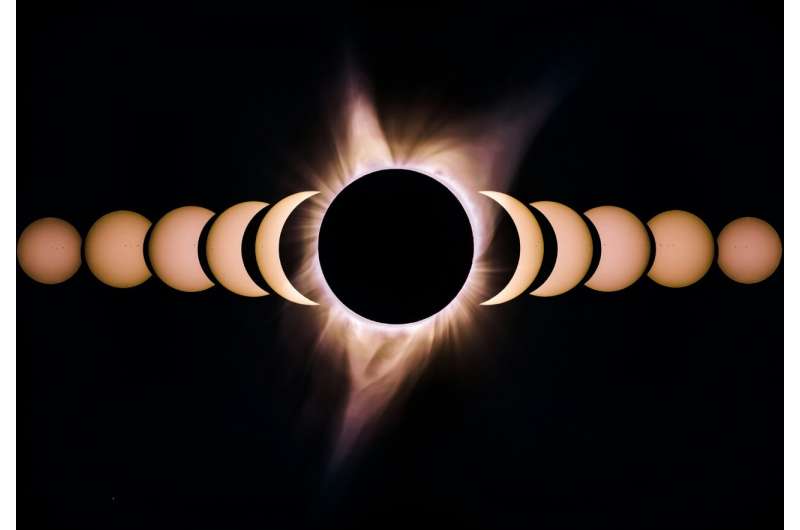FAA confirms SpaceX Falcon 9 is grounded because of Crew-9 launch issue
Tuesday, 01 October 2024 12:02Your request has been blocked by our server's security policies.
If you believe this is an error, please contact our support team.
Dust sparked biggest phytoplankton bloom in decades
Tuesday, 01 October 2024 11:40
New research reveals that dust carried by the wind from southern Africa towards Madagascar triggered the largest phytoplankton bloom in two decades – and, unusually, this occurred at a time of year when such blooms are rarely seen.
Ground Game: Raytheon’s Mission Operations Centers Improve Forecasting for Civilian Space Missions
Tuesday, 01 October 2024 11:24

Unveiling the hidden snow dunes shaping Antarctica's frozen landscape
Tuesday, 01 October 2024 06:00
Sand dunes are a familiar sight along beaches and in deserts. While we know how regular sand dunes are formed, much less is known about dunes made of snow. In a new study, scientists have analysed the vast snow dunes across Antarctica – reshaping our understanding of the continent's surface dynamics.
This research sheds light on the unexplored world of Antarctic snow dunes, offering a fresh perspective on the complex interactions between wind, snow and climate in one of Earth's harshest environments.
Apex to provide satellite buses for Anduril’s defense-oriented space missions
Tuesday, 01 October 2024 06:00

New mission to create total solar eclipses in space
Monday, 30 September 2024 15:52
A UK team of researchers including UCL's Professor Lucie Green are working on the launch of a spacecraft mission that will allow us to view the sun's atmosphere in more detail than ever before.
The proposed MESOM mission will enable researchers to study the conditions that create solar storms, leading to improvements in forecasts of space weather on Earth.
The MESOM spacecraft will fly on a peculiar trajectory enabled by the gravitational attraction of the Earth, the sun and the moon, and will use the shadow of the moon to re-create a total solar eclipse in space once every lunar month lasting almost 50 minutes.
Total solar eclipses seen from Earth are much shorter and only last between 10 seconds and 7.5 minutes, with the annular solar eclipse in the Southern Hemisphere this Wednesday 2 October expected to last around seven minutes.
Creating a longer eclipse in space will enable the MESOM team to take high-quality images and measurements of the sun's corona, filling gaps in existing understanding of the physical processes taking place in the solar atmosphere that lead to space weather.
SpaceX docks at ISS to take Starliner astronauts home next year
Monday, 30 September 2024 15:25 The SpaceX crew that will ferry back in February two astronauts stranded on the International Space Station docked with the orbiting laboratory on Sunday, a live stream of the mission showed.
The Falcon 9 rocket took off at 1:17 pm (1717 GMT) from Cape Canaveral, Florida on Saturday, with the Crew-9 mission aboard a Dragon spacecraft making contact with the ISS at 5:30 pm Sunday.
After d
The SpaceX crew that will ferry back in February two astronauts stranded on the International Space Station docked with the orbiting laboratory on Sunday, a live stream of the mission showed.
The Falcon 9 rocket took off at 1:17 pm (1717 GMT) from Cape Canaveral, Florida on Saturday, with the Crew-9 mission aboard a Dragon spacecraft making contact with the ISS at 5:30 pm Sunday.
After d CubeSats, the tiniest of satellites, are changing the way we explore the solar system
Monday, 30 September 2024 14:10
Most CubeSats weigh less than a bowling ball, and some are small enough to hold in your hand. But the impact these instruments are having on space exploration is gigantic. CubeSats—miniature, agile and cheap satellites—are revolutionizing how scientists study the cosmos.
A standard-size CubeSat is tiny, about 4 pounds (roughly 2 kilograms). Some are larger, maybe four times the standard size, but others are no more than a pound.
As a professor of electrical and computer engineering who works with new space technologies, I can tell you that CubeSats are a simpler and far less costly way to reach other worlds.
Rather than carry many instruments with a vast array of purposes, these Lilliputian-size satellites typically focus on a single, specific scientific goal—whether discovering exoplanets or measuring the size of an asteroid. They are affordable throughout the space community, even to small startup, private companies and university laboratories.
The government should investigate supply chains in the space economy
Monday, 30 September 2024 14:00
Commerce begins beta tests of space traffic coordination system
Monday, 30 September 2024 13:00










